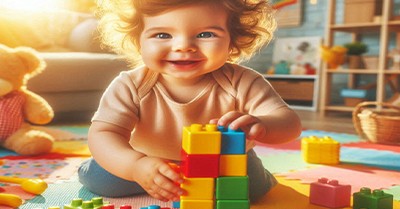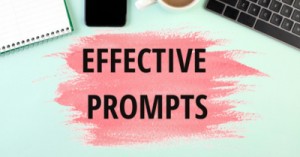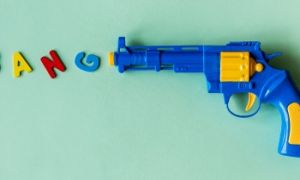EYLF Outcome 4: Children Are Confident and Involved Learners, focuses on fostering children's confidence and involvement as learners. The following article provides information on Strategies To Achieve Outcome 4 With Babies, Goals For Babies To Acheive EYLF Outcome 4, Example Activities That Link With Outcome 4 For Babies, and more.
Strategies To Achieve Outcome 4 With Babies
-
Promote Sensory Exploration: Offer babies a variety of sensory experiences, such as textured toys, water play, or natural materials like sand and leaves. This fosters curiosity and engagement.
-
Encourage Early Problem-Solving: Provide simple puzzles, stacking toys, or soft blocks. Interact with them as they explore these materials to help develop persistence and problem-solving skills.
-
Responsive Interactions: Tune into babies' cues and interests. Show enthusiasm and encouragement when they try new activities or express curiosity.
-
Support Independence: Allow babies to make choices, like picking a toy or activity, to build confidence and autonomy.
-
Facilitate Creative Play: Introduce safe creative activities like finger painting or exploring colorful ribbons and fabrics, stimulating imagination.
-
Adapt the Environment: Create spaces with accessible, age-appropriate resources that babies can safely explore, building their sense of control and involvement.
Goals for Babies to Achieve EYLF Outcome 4
-
Engagement in Exploration: Encouraging babies to interact with their environment using sensory materials to spark curiosity and investigation.
-
Development of Persistence: Supporting babies to repeat actions, like stacking blocks or turning pages in board books, fostering concentration and determination.
-
Expression of Creativity: Helping babies experiment with textures, colors, or sounds, such as through finger painting or musical toys.
-
Building Confidence: Creating a safe space where babies feel comfortable trying new things, making choices, and expressing their interests.
-
Encouraging Problem-Solving Skills: Offering opportunities to experiment, such as reaching for toys just out of grasp, helping develop simple problem-solving capabilities.
-
Strengthening Relationships and Communication: Engaging in responsive interactions like smiles, gestures, or cooing, to support learning and confidence.
Example Activities That Link With Outcome 4 For Babies
Here are some engaging activities designed to align with EYLF Outcome 4 and foster confident, involved learning for babies:
-
Treasure Baskets: Fill a basket with safe, sensory items like wooden spoons, textured fabrics, and soft brushes. Allow babies to explore and experiment, stimulating curiosity and problem-solving.
-
Peek-a-Boo with Objects: Use scarves or cloths to play peek-a-boo, encouraging babies to investigate and discover what's hidden, building persistence.
-
Water Play: Provide a shallow tray with water and floating toys. Babies can experiment with splashing, pouring, and observing how objects behave in water, enhancing exploration skills.
-
Musical Moments: Introduce simple instruments like tambourines or maracas, or play rhythmic songs. Let babies interact with the sounds, promoting creativity and engagement.
-
Finger Painting with Edible Paints: Use baby-safe edible paints for a finger painting session. This allows babies to explore colors and textures, fostering their creative expression.
-
Sensory Walk: Arrange soft mats with different textures or surfaces. Encourage babies to crawl or walk on them, sparking curiosity through sensory exploration.
-
Mirror Time: Place a baby-safe mirror at their level to let them observe and interact with their reflection. This encourages curiosity and problem-solving.
Further Reading
Achieving EYLF Outcome 1 In The Babies Room
Achieving EYLF Outcome 2 In The Babies Room
Achieving EYLF Outcome 3 In The Babies Room







 Here is the list of the EYLF Learning Outcomes that you can use as a guide or reference for your documentation and planning. The EYLF
Here is the list of the EYLF Learning Outcomes that you can use as a guide or reference for your documentation and planning. The EYLF The EYLF is a guide which consists of Principles, Practices and 5 main Learning Outcomes along with each of their sub outcomes, based on identity,
The EYLF is a guide which consists of Principles, Practices and 5 main Learning Outcomes along with each of their sub outcomes, based on identity, This is a guide on How to Write a Learning Story. It provides information on What Is A Learning Story, Writing A Learning Story, Sample
This is a guide on How to Write a Learning Story. It provides information on What Is A Learning Story, Writing A Learning Story, Sample One of the most important types of documentation methods that educators needs to be familiar with are “observations”. Observations are crucial for all early childhood
One of the most important types of documentation methods that educators needs to be familiar with are “observations”. Observations are crucial for all early childhood To support children achieve learning outcomes from the EYLF Framework, the following list gives educators examples of how to promote children's learning in each individual
To support children achieve learning outcomes from the EYLF Framework, the following list gives educators examples of how to promote children's learning in each individual Reflective practice is learning from everyday situations and issues and concerns that arise which form part of our daily routine while working in an early
Reflective practice is learning from everyday situations and issues and concerns that arise which form part of our daily routine while working in an early Within Australia, Programming and Planning is reflected and supported by the Early Years Learning Framework. Educators within early childhood settings, use the EYLF to guide
Within Australia, Programming and Planning is reflected and supported by the Early Years Learning Framework. Educators within early childhood settings, use the EYLF to guide When observing children, it's important that we use a range of different observation methods from running records, learning stories to photographs and work samples. Using
When observing children, it's important that we use a range of different observation methods from running records, learning stories to photographs and work samples. Using This is a guide for educators on what to observe under each sub learning outcome from the EYLF Framework, when a child is engaged in
This is a guide for educators on what to observe under each sub learning outcome from the EYLF Framework, when a child is engaged in The Early Years Learning Framework describes the curriculum as “all the interactions, experiences, activities, routines and events, planned and unplanned, that occur in an environment
The Early Years Learning Framework describes the curriculum as “all the interactions, experiences, activities, routines and events, planned and unplanned, that occur in an environment


